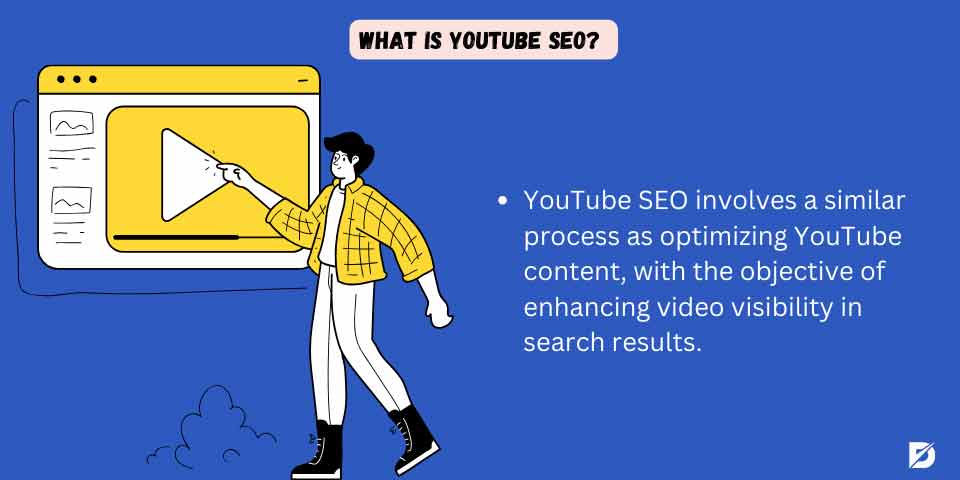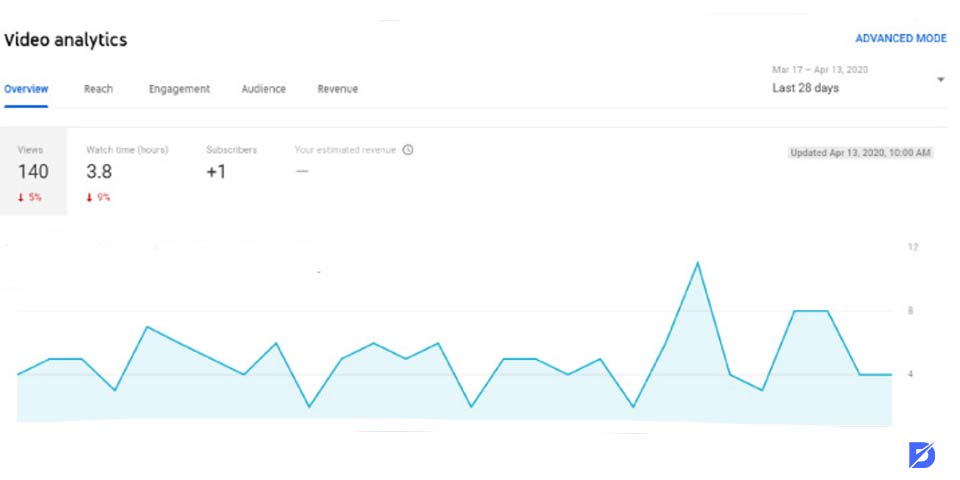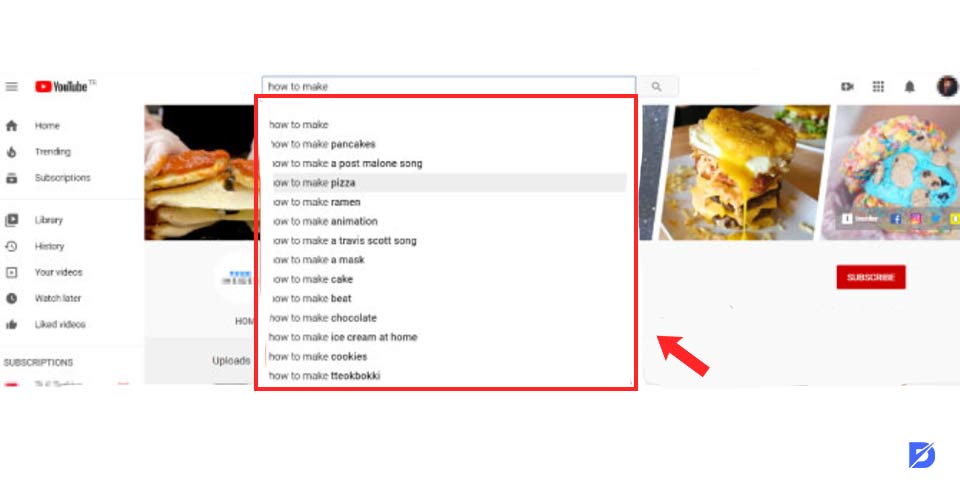Nowadays, almost everybody dreams of being a famous YouTuber and earning tons of money from their videos. Even though it sounds great, getting noticed on YouTube is not an easy task to do, since the competition is real. Would you want to become a successful YouTuber as well? Then feel no worries. We will try to give you the most effective and relevant tips and tricks of YouTube SEO to help you achieve your goals.

What Is YouTube SEO?
As you probably know, SEO stands for Search Engine Optimization. It is a discipline that increases the rankings of websites and manages how they appear on search results. YouTube SEO is more or less the same process specified for YouTube content. It aims to optimize your videos to make them appear at the top of search results. Tip: If you don’t know what is SEO, to begin with, you can read our relevant article and find out.
To give an example, let’s say you uploaded a tutorial for making pizza. What YouTube SEO does is show your video as the most relevant result to users who would like to watch a pizza tutorial video. As you can see, YouTube aims to match what the user needs to see and which content is the most related to it. Your duty as a content creator on YouTube must be creating the best content about a subject and optimizing it to make sure everybody searches for that subject and sees your video before your competitors. Do not forget, even if you have the best pizza recipe. It is not important if your video is not optimized for SEO YouTube since no one will see it.
If you feel like dominating YouTube SEO in 2020 and ranking number one to get more views and subscribers organically, then you’re at the right place. In this article, you’re going to learn how to rank your videos number one on YouTube. We are going to break down the best strategies and tactics out there to get your videos to rank high. Plus, there’s a hack that we are going to share with you at the end of this article! So stay tuned to find out how you can actually use ads to retrain the algorithm.
Before we start, we want to point out is you should think of YouTube as a search engine just like Google. Since Google owns YouTube, a lot if not all, of its technology for indexing information is actually applicable to YouTube. That’s why if you have experience with blogging, keep in mind that some blogging SEO principles actually work really great for YouTube SEO as well.
What Is Metadata?
The first thing we want to mention is metadata. Metadata is how Google understands what people are searching for versus what your content is saying. There are a few very specific things that you should be doing for all your YouTube videos:
Number one is that the title of your video should match the upload file of your video. That one should be a common one that is pretty well known at this point. So whatever the name of the video is, your upload file should match that.
The next thing is the description. The description basically should be your script. If you’re scripting your information out for your YouTube videos, you can just paste it into the description box, and that’s also going to help as well.
Number three is the tags. Tags are what you use to tell YouTube what people are searching for related to your video. There is a very useful tool that you can use, a Chrome extension you can get for free. There’s a premium version, too, but you can use it for free. It’s called vidIQ. We recommend you download the vidIQ free Chrome extension and use it every single time when you upload a video. It gives you an SEO checklist of all the different things that you should be using. VidIQ also shows you how well you are ranking for each one of those tags.
For example, if you’re making a video and the video is called “Top 5 fashion trends for 2020,” you can type in “Top 5 fashion trends” as one of your tags, and the Google video search will show you how well you’re going to rank against your rivals. It can also give you some additional insights.
Moving on to number four, the last thing to improve metadata is your transcript. Earlier, we mentioned that if you have a script for your content, you can put it in the description box. You can upload your transcript file so that as the video starts playing, it will appear as subtitles at the bottom of the video. That’s your transcript. The great thing about that is Google can index the entire file, so it makes it more searchable. Statistically, the powerful stuff is the title, description, and tags, but the transcript is also nice to have.
What Is Keyword Frequency?
Within the context of all, it is vital to have proper keyword frequency. For example, let’s say you recorded a video, and the title of it is “YouTube SEO.” You should be saying YouTube SEO several times during your video, and the term YouTube SEO should exist in your title, as well as your description and tags. These are just fundamental blogging principles that we know work on Google. So, as we mentioned earlier, a lot of those things apply over here.
Another great thing you can do to build your video is to use vidIQ to validate how much keyword frequency you have while you’re uploading it. You can also add an end card, which provides additional engaging elements that help you as well.

What Is Watch Time?
Watch time is a critical metric of the YouTube algorithm. The algorithm is constantly taking information engagement signals to determine how valuable content is. For example, think that somebody searches for a video and clicks on it but doesn’t watch it at all. Then, it is not going to help that video’s rankings. On the contrary, think of somebody watching the video. He or she doesn’t like it, doesn’t comment on it, but still watches it until the end. That actually sends a positive signal because the whole point is that they’re consuming the content. So unlike other social media platforms where comments and likes are so big, they are still necessary on YouTube, but not as much as watch time.
Why? Because if someone searches for something, your content should be solving the needs of the search. If they are watching for 10 seconds or 10 percent of the video, it probably means there was a misalignment from what someone was looking for to what you gave them. That’s why watch time is something that YouTube has made an update on to prioritize this. It is actually trademarked within their algorithm. Google made so many changes to its algorithm, and probably the YouTube algorithm is going to continue to grow.
Watch time is heavily related to the quality of your content. Are you solving the search? Do you have visual aids? YouTube is a platform of entertainment, after all. Putting a lot of information, especially educational information, can become a little bit boring. So having visual aids, such as a b-roll to show people, helps maintain attention retention.
The next thing is having a hero. Your videos should have a physical person that people can engage with and interact with. There is a ton of content out there that doesn’t have a hero. There are a ton of videos in the marketing space that are just screens plus somebody talking over them. So it doesn’t mean you need to, but it does help.
What Is Content Strategy?
Your content strategy is super crucial to rank number one on YouTube. There was an old saying: “Don’t make videos and ask your friends to watch them. Make videos that your friends want to watch.” Don’t just go and produce content and see if people are going to search for it. Find out what people are searching for first using SEO and videos that are related, and then create the content about what they are searching for. This idea should be the key part of your content strategy.

Using Native Search
YouTube is a search platform. It is the second largest. A lot of people are coming here and searching for things. Figure out who is your ideal customer, consumer, or audience first and learn what they’re searching for. Then, create that content for them. In this process, vidIQ, the free Chrome extension we mentioned, is going to be useful. But you can also use Native Search. You can open YouTube right now and start typing in a word. Hit the spacebar, and it’s going to show you what it thinks your search is going to be based on what everyone is searching for. It gives you an idea of the search volume of different things. So you can use the native search to help you directionally.
Using VidIQ in your Content Strategy
VidIQ is going to help you here because it’s going to show you a competition score. From 0 to 100, it is going to show you how competitive the query is and also the volume of searches. If a lot of people are not searching for it, then you might not want to create content around it. Also, if a few people are searching for it and if it has high competition, you might not want to play in that space either. What you need to do is find words and phrases that have a decent level of searches with not a lot of competition. That is where vidIQ becomes super helpful.

Long-Tail Titles
The next thing within your content strategy that can help number one on YouTube ranking and maximize your SEO is using long-tail titles. For example, if someone is searching for “how to start a business,” that’s a very general search. We don’t even know what business type it is. The title should be “How to start a business in the finance industry?” “How to start a business after 30?” Or “How to start a business with Amazon?” Those are more specific, long-tail phrases.
If you try to compete with a general phrase like “how to start a business,” you will have a hard time. So many people have created content around that subject. It’s going to be insane to try to compete with them, so it doesn’t make sense at all. It’s not a good use of your energy unless you influence power or celebrity power. That’s a different story, though.
The Hack
The last thing we want to share with you is a hack! It’s very successful. Think about it: when you’re posting something on YouTube, you’re teaching the algorithm. It’s like you are training it, right? So, as people are searching for your content, the algorithm says, “This video has good watch time and receives likes and engagement. It’s all right. I should push this content up.” However, sometimes you publish your content at the wrong time. Maybe at that time of the month, people were not really looking for that content. Perhaps it didn’t do well because you have some subscribers, but it didn’t reach a lot of them. You can retrain the algorithm to push your content back up, and you can actually do this with ads.
Sometimes, you post a video organically, and it doesn’t get that many views in the beginning. Then, you check your rankings using vidIQ. You want to see how you are doing, and the result is that your video is doing poorly. To change things a little, put some ads behind your video. We are not talking about a lot of money here. Something like 20-30 dollars worth of ads would be able to successfully move that video from ranking 8th or 17th to ranking third, second, and even, in some videos, first.

The Tips for YouTube SEO
We’ll mention the important tips for YouTube SEO strategies. These tips are vital for you to reach a higher YouTube search.
- Choose the Right Keywords: The right keywords are crucial in video optimization. Focus on highly relevant terms to your content and be widely searched by your target audience. Use keyword research tools to identify phrases with high search volumes but moderate competition.
- Using Keywords in the Video: Your video’s title is your first impression on potential viewers. Incorporate your primary keyword naturally into the title. This is helpful for SEO and gives viewers a clear idea of what your video is about.
- Including Keywords: Ensure your video file name includes your primary keyword before uploading. This often-overlooked step signals to search engines what your content is about, contributing to better SEO.
- Optimize Descriptions: The description box is valuable for enhancing your video’s SEO. Start with a brief, engaging summary incorporating your main keywords, ideally within the first 100 characters. Then, expand on the content, including secondary keywords, relevant links, and a call-to-action.
- Video Hashtags: Hashtags are powerful tools for increasing your content’s discoverability. Include relevant hashtags in your video description so that you can categorize your content and make it more visible in search results. Be strategic and choose popular hashtags yet specific to your video’s topic.
- Correct Video Category: Categorizing your video correctly on platforms like YouTube is crucial. It helps the algorithm understand where to place your video and which audience to target. Choose a category that best suits your video’s theme: education, entertainment, how-to, or any other relevant category.
- Creative Thumbnails: Thumbnails are the visual storefront of your video, playing a critical role in the viewer’s decision to click. Design and use a visually attractive thumbnail that reflects the content. Use vibrant colors, readable fonts, and compelling imagery to grab attention.
- Using Subtitles and Closed Captions: Incorporating subtitles and closed captions can help your videos to be accessible more, including those who are deaf or hard of hearing and viewers who prefer watching videos without sound. Subtitles also provide an SEO advantage, allowing search engines to index more of your content and improving the chances of your video being found.
YouTube SEO Tools
Now, let’s check the three most used YouTube SEO tools you can implement into your strategy.
- VidIQ Vision: VidIQ Vision is a dedicated tool for YouTube optimization. It offers a range of features. And those are keyword research, trend alerts, and analytics insights. Its unique selling point is the ability to provide real-time data and suggestions to optimize your videos for higher rankings and more views on YouTube.
- Ahrefs: Primarily known for its capabilities in website SEO, Ahrefs is also helpful for YouTube SEO. It helps in keyword research, allowing you to explore what your audience is searching on YouTube. Ahrefs can also track your video rankings and analyze your competitors, giving you a clearer picture of your content in the YouTube ecosystem.
- Canva: While Canva is predominantly a design tool, its importance in YouTube SEO shouldn’t be underestimated. Attractive, well-designed thumbnails and channel art created using Canva can significantly increase click-through rates, a critical factor in YouTube’s search and recommendation algorithm.
This sums up our guide to YouTube SEO. We hope it helps you with your YouTube career. Thank you so much for visiting and reading the Dopinger Blog, where we simplify SEO-related topics so that you can accelerate your business growth.
Conclusion
At the end of the day, it’s really about your content quality. Still, there are ways to hack the algorithm a little. If your content doesn’t work so well, you can retrain that algorithm to perform, granted that your content is good and you actually have other sections covered. These are some of the things that YouTubers do when they upload videos to YouTube to maximize and get these videos ranked number one. It doesn’t mean every video is going to rank number one. You need to think about it like it is science: Trial and Experiment.
Frequently Asked Questions About
One of the most simple things you can do to optimize your video for YouTube SEO is to rename the file name of your video. The title of your video and the name of your video file should be the same.
Yes. YouTube videos will show up on SERP. Since Google owns YouTube, they help each other in SEO.
Becoming a YouTuber is easy and completely free. All you need to do is create a YouTube account, produce a video, and upload it on your channel.





No comments to show.